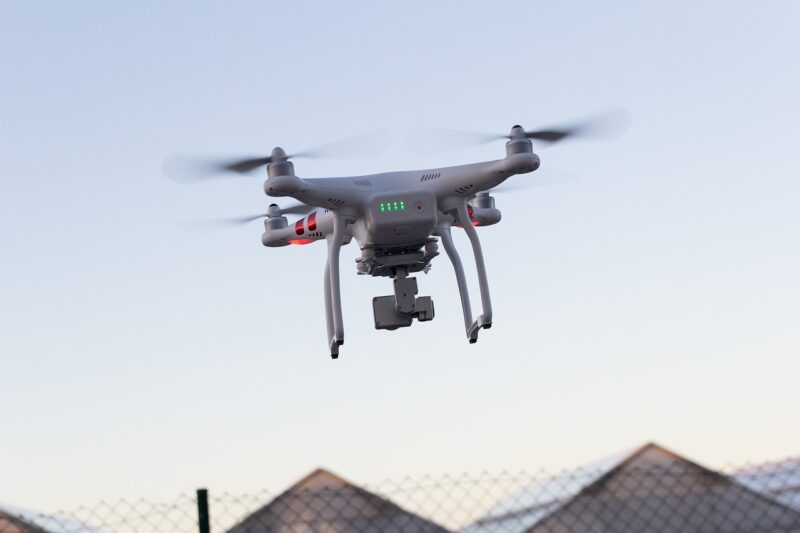
In recent years, artificial intelligence (AI) surveillance has flourished due to advancements in technology, significantly impacting various sectors like security, law enforcement, and even workplace monitoring. While AI surveillance presents opportunities for increasing safety and efficiency, it has also raised profound ethical questions regarding privacy, consent, and the potential for misuse. In this article, we will delve into the ethics of AI surveillance, weighing the benefits against the privacy concerns that arise from its implementation.
1. Understanding AI Surveillance
AI surveillance involves the use of artificial intelligence technologies to monitor and analyze behavior, often utilizing tools like facial recognition, anomaly detection, and predictive analytics. These systems analyze vast amounts of data, making it possible to make decisions or predictions that would be unattainable with human observation alone.
Some common applications of AI surveillance include:
- Public Security: Many cities implement AI surveillance for monitoring public areas to assist law enforcement in deterring crime.
- Workplace Monitoring: Employers leverage surveillance tools to monitor employee productivity and ensure workplace safety.
- Smart Home Devices: AI-integrated security systems enable homeowners to monitor activities at their residences remotely.
While these applications can enhance safety and efficiency, they also present myriad ethical dilemmas that warrant careful consideration.
2. The Benefits of AI Surveillance
Despite the concerns surrounding AI surveillance, its potential benefits are significant. Here are some of the ways AI surveillance can contribute positively to society:
- Enhanced Security: AI systems can analyze real-time data and identify potential threats, allowing law enforcement to respond more swiftly to incidents.
- Crime Prevention: Predictive policing algorithms can forecast criminal activities based on historical data, enabling proactive measures to prevent crime.
- Improved Efficiency: In workplaces, AI surveillance can streamline processes by monitoring employee performance, thus increasing productivity and safety.
These advantages create a compelling case for the integration of AI in surveillance; however, ethical implications must not be overlooked.
3. Privacy Concerns
As AI surveillance becomes more prevalent, the concerns regarding individual privacy intensify. Here are a few key issues:
- Loss of Anonymity: AI surveillance removes the ability to move through public spaces without being monitored, raising questions about the loss of freedom.
- Informed Consent: Often, individuals are unaware that they are being monitored or evaluated by AI systems, which raises issues about consent and transparency.
- Data Misuse: The potential for misuse of collected data is high. Without stringent regulations, data taken for security purposes could be exploited for commercial gain or even surveillance beyond its intended purpose.
These concerns underscore the need for ethical guidelines surrounding the deployment of AI surveillance systems.
4. Balancing Safety with Privacy
To create a just and effective surveillance ecosystem, a balance between safety and privacy must be struck. Here are some approaches to achieving that balance:
- Implementing Strict Regulations: Governments and organizations should create comprehensive policies governing the use of AI surveillance, focusing on transparency, data protection, and accountability.
- Encouraging Public Discourse: Ongoing dialogues between technology developers, lawmakers, and the public can help ensure that diverse perspectives are considered in the development of surveillance technologies.
- Emphasizing Transparency and Consent: Organizations utilizing AI surveillance should openly communicate their methods and obtain informed consent from individuals when monitoring is present.
By prioritizing ethical considerations alongside technological innovation, we can utilize AI surveillance’s capabilities while minimizing its potential for harm.
5. The Role of Technology Developers
Developers and organizations implementing AI surveillance solutions bear responsibility for creating ethical systems. This includes:
- Incorporating Ethical Frameworks: Developers should embed ethical considerations into the design phase of surveillance technologies, ensuring that privacy and fairness are prioritized.
- Conducting Risk Assessments: Organizations should evaluate the potential risks of deploying AI surveillance technologies, considering not just technical aspects but also social implications.
- Establishing Governance Mechanisms: A governance structure can ensure that AI surveillance tools are audited regularly, allowing for adjustments in response to emerging ethical concerns.
By advocating for ethical practices, technology developers can contribute to developing surveillance systems that respect individual rights while enhancing public safety.
6. Looking Forward: The Future of AI Surveillance
As AI surveillance technologies continue to advance, the balance between safety and privacy will require ongoing attention. Future trends might include:
- Greater Use of Transparency Tools: Emerging technologies may allow for better transparency and control of surveillance practices by the public, including tools that allow individuals to see what data is collected about them.
- Adaptive Consent Models: Consent mechanisms might evolve to be more dynamic and include options for individuals to control how their data is used.
- Global Collaboration on Standards: Countries around the world will need to work together to create international standards and ethical guidelines for the use of AI surveillance to ensure respect for human rights.
Navigating the complexities of AI surveillance ethics is essential for creating a future that embraces innovation while safeguarding individual freedoms.
Conclusion
The ethics of AI surveillance present critical challenges as we balance the benefits of increased safety with the fundamental need for privacy. By understanding the implications and striving to implement ethical standards, society can harness the potential of AI surveillance while preserving essential human rights. Engaging in ongoing discussions and developing transparent practices will be key to navigating this complex terrain—a challenge that each stakeholder must take on to ensure a safer and more just society.








